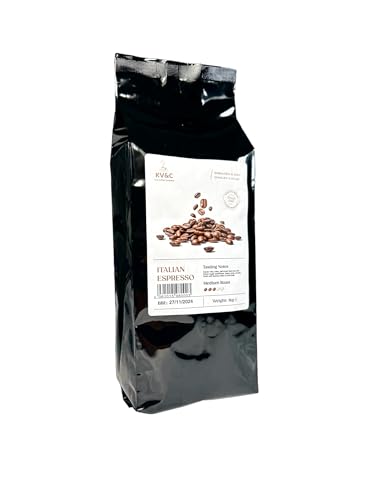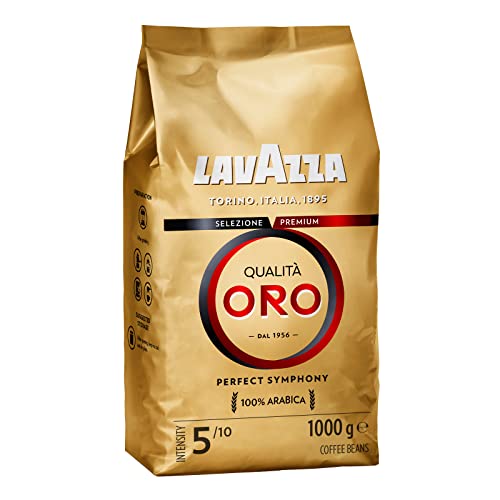You'll Never Be Able To Figure Out This Pure Arabica Coffee Beans's Se…
페이지 정보

본문
 Pure premium arabica coffee beans Coffee Beans
Pure premium arabica coffee beans Coffee BeansCoffee lovers adore the soft and sweet taste of pure arabica beans. These beans are delicate and are ideal for light or medium roasts, that preserve their natural flavors and avoid burning them.
These plants flourish in the coffee belt that extends between the Tropic of Cancer, and the Tropic of Capricorn. The two most popular varieties are Typica and Bourbon.
Origin
Pure arabica coffee beans are grown in high-altitude areas of the globe and provide an elegant, Pure Arabica Coffee Beans soft taste with subtle flavor nuances. These beans are ideal for filter coffee, French presses, aeropresses cold brews, moka pots, and espresso machines. These coffee beans have been dried processed, which means that they're not fermented using water. This preserves the original aroma and flavor. They're also low in caffeine, which makes them an ideal choice for those who want to avoid the negative effects that come with too much coffee.
Coffea arabica is a kind of evergreen shrubs and small trees that are cultivated for drupes, which are then roasted, ground and used to make espresso. A majority of the coffee consumed is made from Arabica beans which account for approximately 60% of all coffee production. These beans are regarded as having superior taste and quality than Robusta, which is more widespread and has a sour and pure Arabica coffee beans less flavorful cup.
In the wild, the plants grow as tall as six meters and produce long beans that are light brown in color and have a central slits which creates the distinctive S-shaped profile. The coffee plant is a tropical evergreen that grows best at altitudes above 800 feet. It needs to be in complete shade. It is also a very delicate and delicate plant that requires the subtropical climate to be cool and is easily damaged by insects and disease.
The Arabica plant, because of its unique climate, produces different varieties of coffee with different flavors and aromas. Some varieties are more popular and others are better for specific roasting styles. They include the Typica Bourbon and Caturra types.
In addition to genetics, external factors like terroir, the ripeness of the beans at harvest time and post-harvest processing, drying and storage, and natural coffee roasting and brewing all influence the flavor of the coffee. This is why it requires a lot of experience, skill and attention to details to prepare and serve the best tasting coffee.
Taste
Pure arabica coffee beans are a must-have for coffee lovers who are serious. They have more flavor, nuances and caffeine than other coffee varieties. They also have less acidity and bitterness. Additionally, artisan arabica coffee beans beans have more natural sugars and fats. This makes them a healthier alternative to other varieties of coffee. These characteristics make arabica coffee the most sought-after kind of coffee in the entire world.
The Arabica plant is a tropical evergreen shrub or small tree that is commercially grown for its seeds, which are roasted and ground into coffee. It is the most favored coffee cultivar in the world, producing 60%. It is thought to be of higher quality in comparison to its closest counterpart, Robusta coffee (Coffea canephora).
There are several different types of single estate arabica coffee beans beans. These differences are due to the bean varieties, growing conditions or processing techniques. Some arabicas are floral or citrusy, whereas others have a spicy or chocolatey taste. The area in which a variety was cultivated will determine the flavor profile. Climate, soil and altitude are all significant in determining the taste.
You can determine the flavor of a specific type of arabica by taking a look at the country of origin. Each country has a unique microclimate that influences the flavor of the coffee it produces. For example the coffee that is grown in Kona on the Big Island of Hawaii has distinctive flavors that can't be replicated in any other place.
Coffee originated from Brazil is renowned for its mild and fruity flavors The coffee from Costa Rica has a full-bodied flavor that is low in acidity. Indonesia and Vietnam produce coffee that has an earthy and strong taste. The best method to discover a coffee that you like is to experiment with various kinds and regions.
Robusta's taste Robusta is more bitter than that of handpicked arabica coffee beans. It contains less than half of caffeine and contains more natural sugars and fats. It also contains acrylamide which is a carcinogen that is found in fried food and potato chips. While these levels are relatively low, it's a good idea to avoid drinking excessive amounts of coffee.
Caffeine content
The amount of caffeine that is in a cup will vary depending on how the coffee is prepared and the type of bean it is made from. A typical 8-ounce cup of drip coffee will contain 100-150 milligrams. The type of beans and the roasting process also play a part. The coffee plants that make arabica have lower levels of caffeine generally than robusta plants.
Caffeine is a component of coffee seeds. It is well-known for its energizing properties and has been used as a drug and stimulant since ancient times. It is a natural pesticide that helps plants protect themselves from insects and diseases.
Pure arabica coffee has a softer and more savoury taste than other varieties. Its low levels of caffeine make it an excellent choice for those who are sensitive to bitterness that is often associated with coffee with high caffeine content. Also, arabica beans have less tannins and acidic flavors which can cause digestive discomfort.
Because of these qualities arabica can be blended with various types of beans to give various distinct flavors. This is a common method to ensure that consumers find the perfect cup of coffee. Many specialty coffee producers and retailers are focused on finding arabica beans that have been grown ethically. Fair wage for farmers, sustainable farming practices and organic certifications are all a part of this.
The cup of coffee you enjoy will depend on the variety of beans, the roasting method and how much caffeine you are comfortable with consuming. The average cup of coffee is 200 milligrams. This is roughly the same as one espresso shot or green tea. Most doctors suggest that healthy adults consume between 400 mg of caffeine daily. Nursing mothers and pregnant women should consult their physician prior to consuming any form of coffee or other source of caffeine. It's important to note that the caffeine in coffee is only an stimulant, not an antidiabetic.
Stores
As the world's most loved beverage, coffee offers many different flavors and tastes. The location, the climate as well as the methods of processing and the roast level all affect the flavor and aroma. The beans are the principal ingredient that determines the taste. The finest coffee is made using arabica beans. These beans are renowned for having mild flavor with floral aromas and fruity flavors, as well as a lack of bitterness. The best arabica beans are high in antioxidants, and they are low caffeine.
In the last few years, the demand worldwide for arabica has risen significantly. This has resulted in price fluctuations and adjustments to instant coffee formulas. The increase in demand has also forced farmers to adapt their practices of cultivation to ensure that the beans they cultivate are able to meet this demand. Additionally, changes in the climate have affected the production of coffee across the globe. The current state of coffee production is a result of a combination of factors that have led to a situation where arabica beans, while rare and costly, aren't in short supply.
Coffee is hydrophilic. This means that it will absorb moisture from the air. The moisture will affect the taste and texture, which is why proper storage is so important for a good cup of coffee. The temperature of the coffee should be between 70 and 85 degrees Fahrenheit. A higher temperature can cause the beans to lose their flavor and texture.
Coffee should be stored in a dark, dry area. It is a good idea to store it in a cabinet or drawer that does not contain any other odor-producing products. It is also an excellent idea to keep the coffee in a sealed container. This will protect the beans against moisture, heat and light. Keep the beans in an airtight container to prevent them from becoming mouldy or musty. It is also a good idea to utilize gas-tight storage bags which will also shield the beans from contaminants and keep them fresh for a longer period of time. This can also help keep their delicate taste. These tips will assist you find the top arabica beans for your morning cup of coffee.

- 이전글There Are Myths And Facts Behind Adult Pleasure Toys 25.01.31
- 다음글The 10 Most Scariest Things About Mines Game Online 25.01.31
댓글목록
등록된 댓글이 없습니다.
